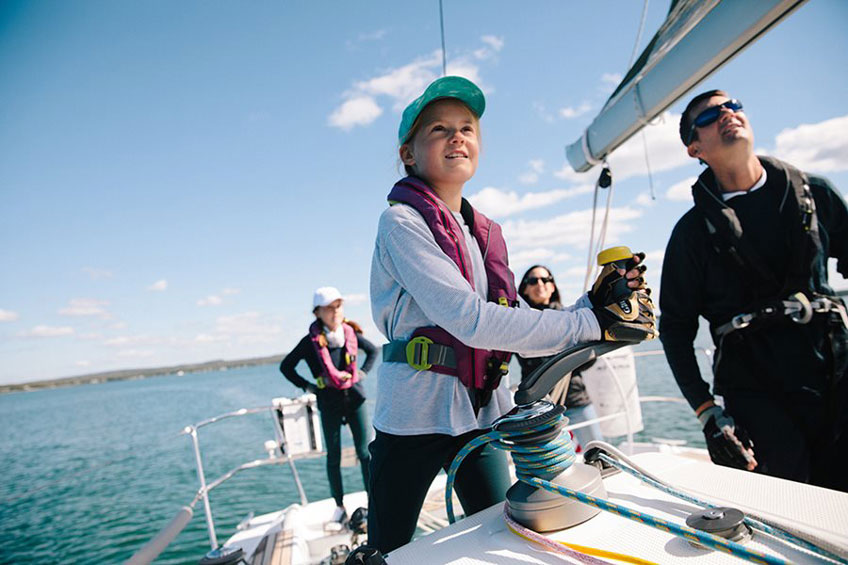Performance is not just greater speed or something for serious racers or professional programs to stress about. The meaning of performance depends on your reasons and goals for sailing. Here are a few steps that will help define what performance means and how you can optimize for the best experience possible.
 For the Michgian-based O'Haver family, that's a no brainer. The family of five lives for their on-the-water adventures on their Beneteau 36.2 "Northern Lights."
For the Michgian-based O'Haver family, that's a no brainer. The family of five lives for their on-the-water adventures on their Beneteau 36.2 "Northern Lights."
Step 1: Answer this question: What does performance mean to you and why does it matter?
If you’re a cruiser, this question might be harder to answer. It’s best to start with why you sail. Do you sail to disconnect from the busy world? To connect with nature? To be alone or share adventures with family and friends? Understanding what motivates you to set sail instead of turning on a motor is a good place to start.
Performance gives you more out of sailing and gets you closer to your sailing goals. It can also take some of the frustration out of certain elements of sailing and help maximize your enjoyment. There are many things that improved performance give you, including the ability to sail in diverse conditions, ease of handling, more confidence and comfort, and, of course, better speed and more control.
Step 2: Identify performance issues
Once you have a solid grasp on why you sail and what is most important to you, it’s time to optimize performance. Start by identifying performance issues that affect your ability to enjoy sailing to its fullest:
- Pointing
- Heel
- Control
- Handling
- Comfort
- Speed
- Downwind/Upwind
- Others?
Step 3: Troubleshoot and optimize your boat
SAIL CONTROL
Optimizing your boat doesn’t necessarily mean throwing a bunch of money at it. The best sails and boats don’t work if not used properly. Use all of the sail controls, and if you have questions ask!
DECK LAYOUT & SET UP
If you deck is set up well for your type of sailing, it can have a major impact on your performance. If you sail shorthanded, think about running your lines back to the cockpit where they’re easier to use. Speak with an expert, and consider:
- Winch locations
- Line and halyard management
- Leads
- Communication, especially important on larger boats
RIGGING & HARDWARE
Having the right hardware for the job and for you and your crew’s comfort is important. Many of these elements can make the job easier and enable safer, more comfortable sailing. Look at these elements:
SAIL INVENTORY
Having the right hardware for the job is important, and so is having the right sail. A coastal cruiser will need a different sail plan than a day sailor or club racer. Do your sails cover the range of conditions you sail in? Do you have a sail that has stretched and is too full? Consider a recut to improve efficiency and reduce heel.
Work with your sailmaker to ensure your sail plan meets your needs and that your inventory is in good shape. There is plenty of sailmaking craft to help you get more life out of your sails. Here are some talking points:
SAIL HANDLING
Managing sails on the boat can be tricky and a source of crew friction. There are many ways to make sail handling easier and safer (and even save you money). Consider:
EDUCATION
To increase your performance, never stop learning and striving to be a better sailor. The resources, expertise, and experience of Quantum sailmakers are at your service. Look into these learning options:
The Quantum team will help you optimize performance for your type of sailing. Reach out for recommendations and help at any step of the way.